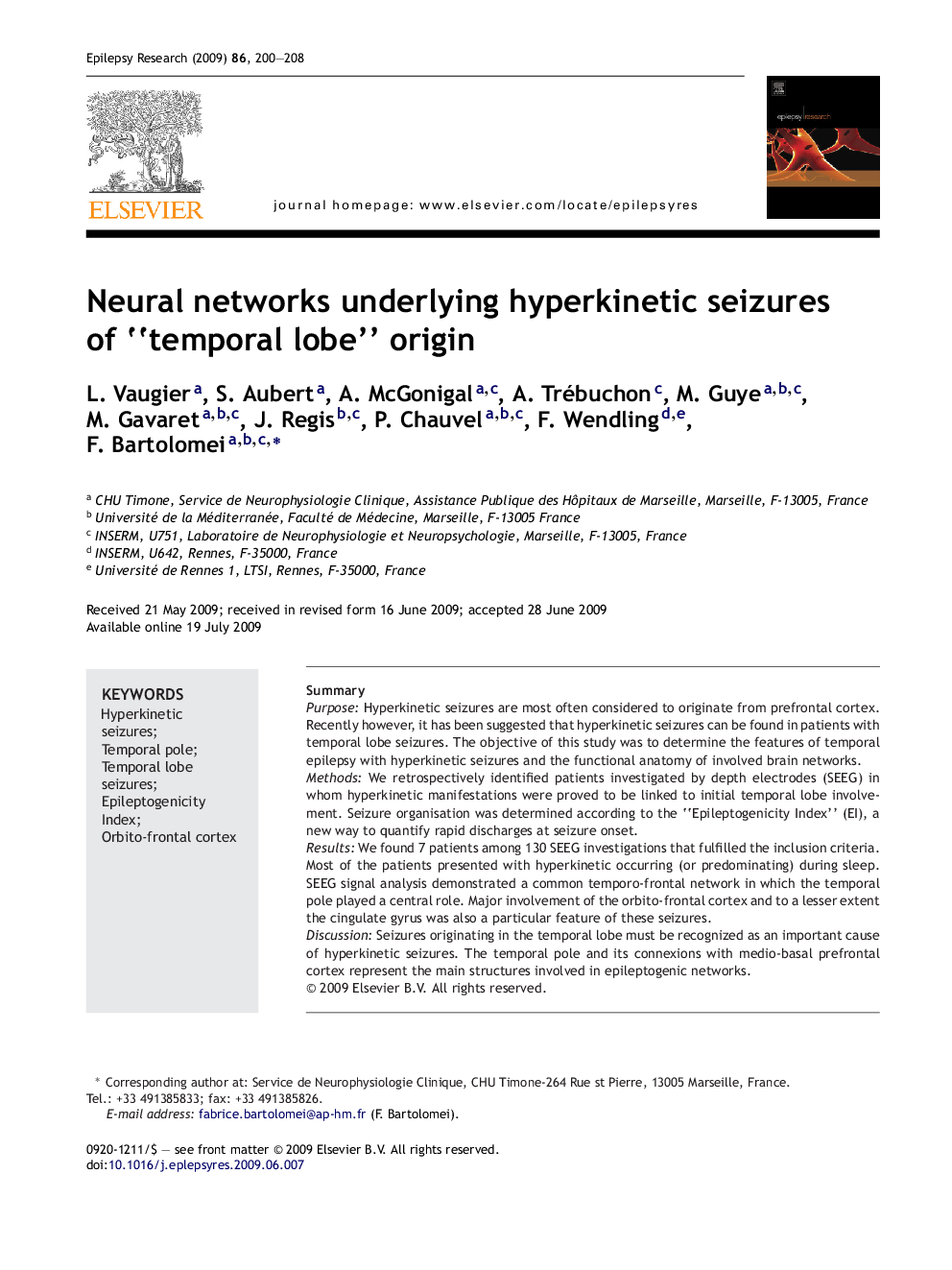| Article ID | Journal | Published Year | Pages | File Type |
|---|---|---|---|---|
| 3052762 | Epilepsy Research | 2009 | 9 Pages |
SummaryPurposeHyperkinetic seizures are most often considered to originate from prefrontal cortex. Recently however, it has been suggested that hyperkinetic seizures can be found in patients with temporal lobe seizures. The objective of this study was to determine the features of temporal epilepsy with hyperkinetic seizures and the functional anatomy of involved brain networks.MethodsWe retrospectively identified patients investigated by depth electrodes (SEEG) in whom hyperkinetic manifestations were proved to be linked to initial temporal lobe involvement. Seizure organisation was determined according to the “Epileptogenicity Index” (EI), a new way to quantify rapid discharges at seizure onset.ResultsWe found 7 patients among 130 SEEG investigations that fulfilled the inclusion criteria. Most of the patients presented with hyperkinetic occurring (or predominating) during sleep. SEEG signal analysis demonstrated a common temporo-frontal network in which the temporal pole played a central role. Major involvement of the orbito-frontal cortex and to a lesser extent the cingulate gyrus was also a particular feature of these seizures.DiscussionSeizures originating in the temporal lobe must be recognized as an important cause of hyperkinetic seizures. The temporal pole and its connexions with medio-basal prefrontal cortex represent the main structures involved in epileptogenic networks.
